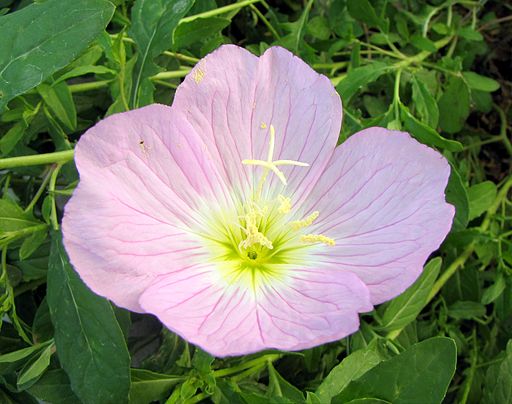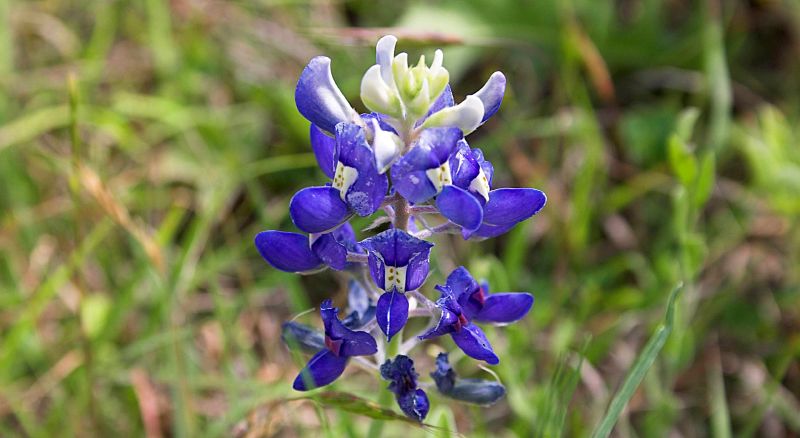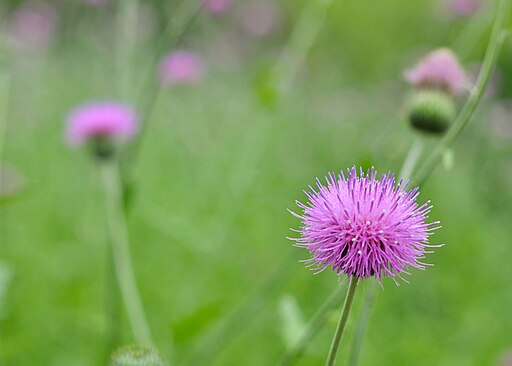The star of this spring has been the evening primrose, Oenothera speciosa, also known as pinklady. It's a common enough flower in the southern United States, but Central Texas tends to get them a bit earlier than most places due to mild winters and wet springs. This year I started seeing them in late February. It's usually a shy bloom, since you usually find them here and there in tucked-away places, but it has been all over this spring.

The state flower, of course, is the Texas bluebonnet, Lupinus texensis. Because it is a standard for seeding, for obvious reasons, you always see a lot.

Another bright bloom is the Indian paintbrush, Castilleja indivisa, also known as prairie-fire. Its flowers are edible, but the plant is an efficient accumulator of selenium, which means that its leaves and roots can become quite toxic.

The Texas purple thistle, Cirsium horridulum, has also occasionally been making an appearance.

Another one I have occasionally seen is Texas star, Lindheimera texana.

Every time it rains, there's a few days in which we get the rain lily, also known as the flor de mayo. Wikimedia commons doesn't seem to have an image, but you can see it at the Lady Bird Johnson Wildflower Center website. It's a picky flower, and, as its name suggests it likes the rain; it comes after the showers and never stays around long.
There are some notable flowers that really aren't out yet this spring, like the Indian blanket, of which I have only seen one, or the giant spiderwort or the purple cornflower. Primary wildflower season usually lasts from March through June, so we are not even halfway through.